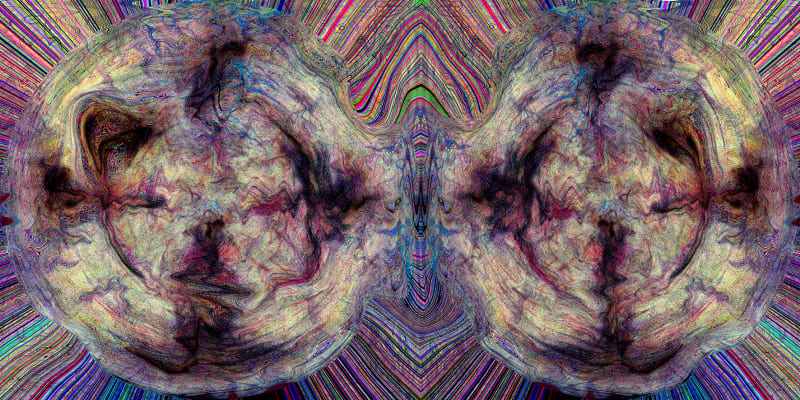Fields presents the first and the largest survey of Tarek Darwish’s (Qatar, b. 1966) work since 1992. Darwish’s body of work relates to finding form in randomness through grids and other models. This is also the throughline of Fields which also expands on his ideas surrounding organic matter, or ‘forests’, forming a duality between artificial and natural, or structured and random. Formally at the core of Darwish’s work is drawing, which for him forms the basis of any further artmaking: visitors are invited to observe how this base translates through and to other media including painting and digital art. While the presented series are in conversation with the different currents of modernism through Darwish’s education in the UK, he places an equal importance for a simple yet formal objective: exploring the varying landscapes of beauty.
The series “Forest” serves as the starting point for this exhibition. For Darwish, they represent the rawest, almost an ideal form in their organic nature and pure, untouched, and uninterfered shape. Here, the drawings range from soft and playful to fierce and ardent, consisting of a visual vocabulary of both repeated and meticulous strokes and dense scribbles accentuated by the intensity of the pigment. The result is a multifaceted landscape articulated by Darwish’s rhythmic recording of the subject matter through gesture and line, where free and furious scrawls, on one hand, and delicate and flickering marks on the other, reveal the drawings’ underlying impulses, carefully orchestrated in order to expand on their performative qualities.
The central concept underlying this show, namely that of the form, plays an integral role in the series “Letters”. Consisting of 35 drawings created between March 2018 and October 2019, the works assume the form of a letter between Darwish and viewers, musing on the subject of drawing. Juxtaposing organic points, spirals, vertical lines, smudges, and occasional traces of erasing pencil marks against the existing grids on the background of the paper, Darwish fiddles with the idea of a framework. Similarly to the “Forest” series, he presents a number of drawings with varying energies–united by their rhythmical and lyrical nature, yet somehow also raw and autonomous. Sequences and points, marks, and lines dominate this series, almost as if Darwish explores the different strategies and philosophies for a point and line to come together, occurring between loose and tense, articulate and spontaneous.
Similarly to the “Letter” series, the idea of a form is at the core of the “Score” drawings. Created on a recognisable structure used to compose and ‘write’ music on, these drawings are inherently more abstract in their visual lexicon than “Forests” and “Letters” although Darwish also contrasts this spontaneity with recognisable symbols and an often intense encircling resembling a coding process. Here, the dialogue between form and chaos are legibly visible: the restless tempo is contrasted by the encircling which provides structure amidst all the random movement.
The same musical elements are evident in “Fields”. Varying between majestic four metre panels to more intimate prints, these are the most playful works in the presented survey. After Darwish’s return to Doha in the early 1990s, access to a computer marked a moment of liberation for him. Since his return, Darwish has explored their potential vis-à-vis his practice. The “Fields” have a rhythmic and intricate quality to them, inviting viewers to embark on a journey of seeing. For Darwish, drawing is the only way to see and with their seemingly endless detailing, these series are the celebration of this: delicate exercises into one of the most important human activities.
In the final series, “Grids”, Darwish’s exploration into form becomes the most physical. Spanning colourful and controlled slightly austere lines and blocks and more intricate and unconstrained and impromptu twirls, circles, and condensed marks, Darwish mediates on the interplay between constrained, stable form and rhythmic, lyrical movement. The resulting works are manifestations of the mechanisms of the spirit, pulsating recordings of the impression and experience of a form through lines, marks and gestures.
